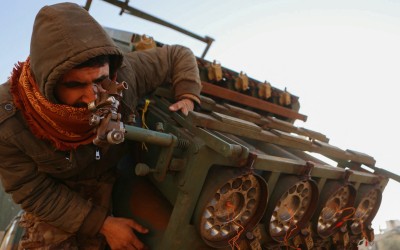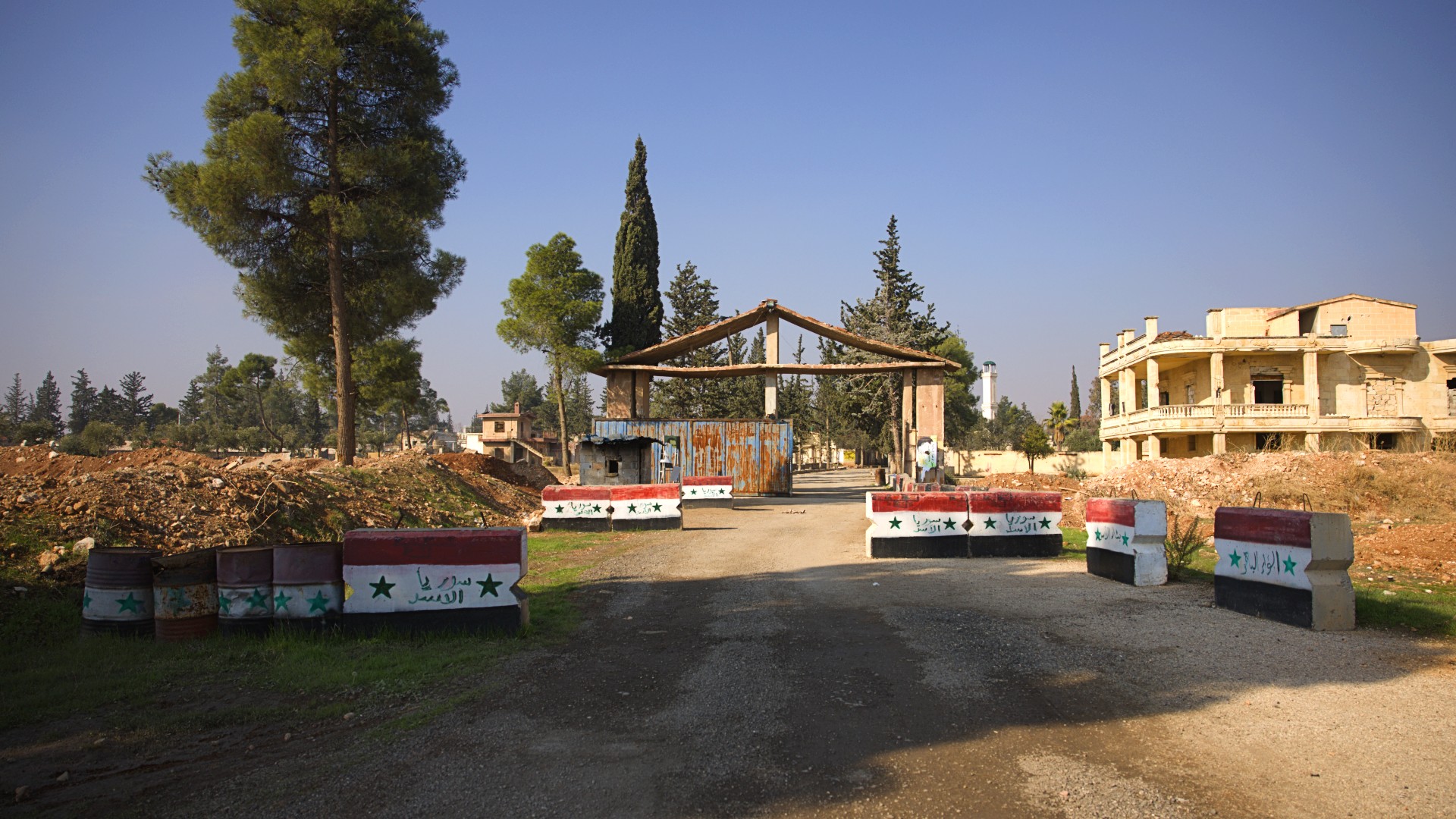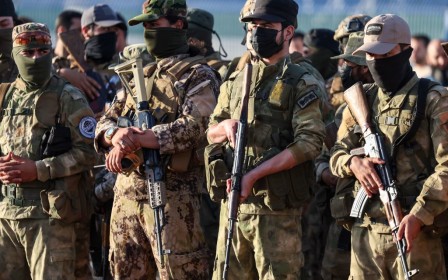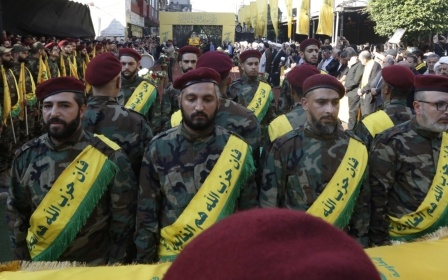Syrian rebels make dramatic Aleppo comeback as they push into the city

Syrian rebels flooded into the northwestern city of Aleppo on Friday, in a shock offensive that has handed President Bashar al-Assad his largest setback in years.
Since breaking out of opposition-held territory at dawn on Wednesday, rebels have charged through the Aleppo countryside, seizing around 50 towns and villages as well as a section of the strategic M5 highway, cutting off supply routes from Damascus.
On Friday, fighters took New Aleppo, a neighbourhood on the city’s western outskirts, and continued to move towards the centre.
Rebels told Middle East Eye that the offensive was in response to Syrian government attacks on opposition-held areas in Idlib and Aleppo provinces.
“Our fighters are now entering Aleppo city to liberate it from Assad and Iranian mercenaries and to return it to the Syrian revolution’s ranks,” rebel commander Lieutenant Colonel Hassan Abdul Ghani told MEE.
New MEE newsletter: Jerusalem Dispatch
Sign up to get the latest insights and analysis on Israel-Palestine, alongside Turkey Unpacked and other MEE newsletters
"We assure all the people of Aleppo that we will be their brothers, protecting them from Assad and Iranian abuses, and we will defend them with our souls,” he added.
“We promise our compatriots in Aleppo city to give them a life of freedom and dignity.”
Encouraged to defect
Rebels have taken several military bases and fortified positions, often with little resistance.
In several of them, journalists embedded with the fighters found images of Qassem Soleimani and Hassan Nasrallah, the late Iranian general and Hezbollah leader who were instrumental in forcing the Syrian opposition from Aleppo in 2016.
The offensive is led by Hay’at Tahrir al-Sham (HTS), a powerful hardline rebel faction. Other rebel groups, including some backed by Turkey, are also involved.
The Syrian Observatory for Human Rights, a UK-based activist group that monitors the war, estimated that around 250 fighters and soldiers have been killed on both sides since the offensive began.
The Syrian defence ministry said its forces were facing a huge attack from rebel groups and that it has killed dozens of enemies.
Bodies line the roads of areas recently conquered by the rebels. Several of them have been seen wearing uniforms and insignia consistent with foreign fighters belonging to Iranian-backed paramilitary groups.
Meanwhile, rebel quadcopter drones were deployed above the frontlines, dropping paper notes encouraging soldiers to surrender or defect and supplying a hotline for them to do so.
“Those who choose to join our ranks and defect from the criminal Assad forces, we promise them safety,” said Abdul Ghani.
Stability undermined
The frontlines of Syria’s civil war have barely changed since 2020. A “de-escalation” agreement in 2019 between rebel-backer Turkey and Assad’s sponsors, Russia and Iran, appeared to create some stability and a long-term ceasefire.
Most of Idlib province has since been held by HTS, a former al-Qaeda affiliate, which has set up a civilian administration.
Turkey-backed rebel groups belonging to the Syrian National Army coalition have held sway in other areas of the north.
However, despite Russia being distracted by the war in Ukraine and Assad’s forces degraded by frequent Israeli attacks, Syrian and Russian warplanes have stepped up air strikes on opposition-held areas since August 2023.
Meanwhile, Assad’s government used the stability to make diplomatic inroads, normalising relations with several regional countries and rejoining the Arab League.
That stability now appears badly undermined. Aleppo is Syria’s second city and became an opposition stronghold following the outbreak of the revolution in 2011. Its 2016, capture by Assad’s forces was highly symbolic.
Meanwhile, rebels have now cut the M5 highway, isolating Aleppo and other Assad-held areas of the north from Damascus and major urban centres.
Rebels have also seized a large amount of weapons and equipment, including tanks, artillery, small combat drones, and ammunition.
On Friday, they announced complete control of Saraqib, a key town on the crossroads where the north-south M5 highway meets the east-west M4.
Opposition joy
Mohamed Belaas, a pro-democracy activist who has been following developments near the frontline, told MEE that civilians across rebel-held areas are celebrating the offensive.
More than five million people live in opposition-held northern Syria, often in extreme poverty, with international aid becoming more infrequent. Around two million of those live in informal camps after being forced to flee other parts of the country due to persecution or attacks by pro-Assad forces.
Belaas said that there are no words to describe the “uplifting feeling” of civilians, some of whom are returning to homes they were displaced from but have now come under rebel control.
The activist, who was originally displaced from eastern Idlib, said that he had never seen the rebels operate in such an organised manner.
“It’s hard to describe the fierce fighting of the rebels, who are advancing to their homes under heavy shelling and Syrian and Russian air strikes over them,” he told MEE.
“The morale of the rebels played a key role in seizing the enemy lines that have been fortified for years,” he added.
“There are also noticeable practices in dealing with captured fighters, treating them in a humanitarian way to encourage others to defect and surrender.”
Middle East Eye delivers independent and unrivalled coverage and analysis of the Middle East, North Africa and beyond. To learn more about republishing this content and the associated fees, please fill out this form. More about MEE can be found here.







